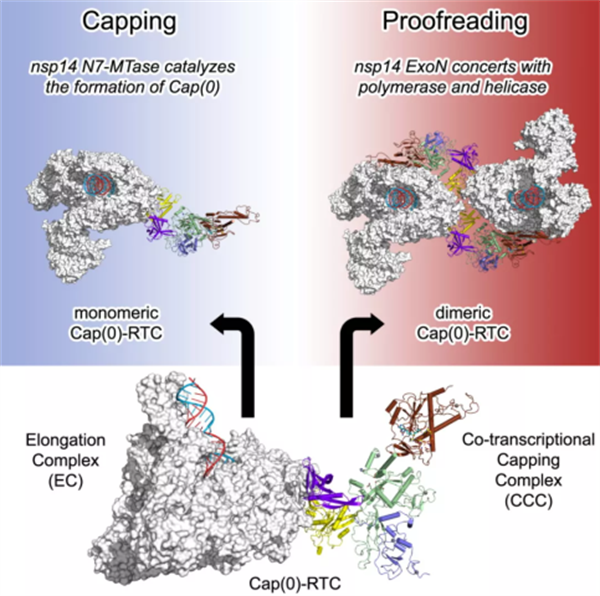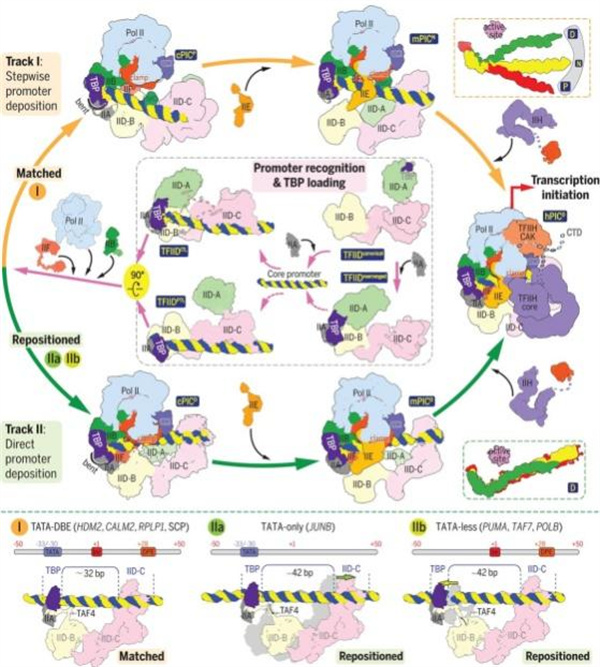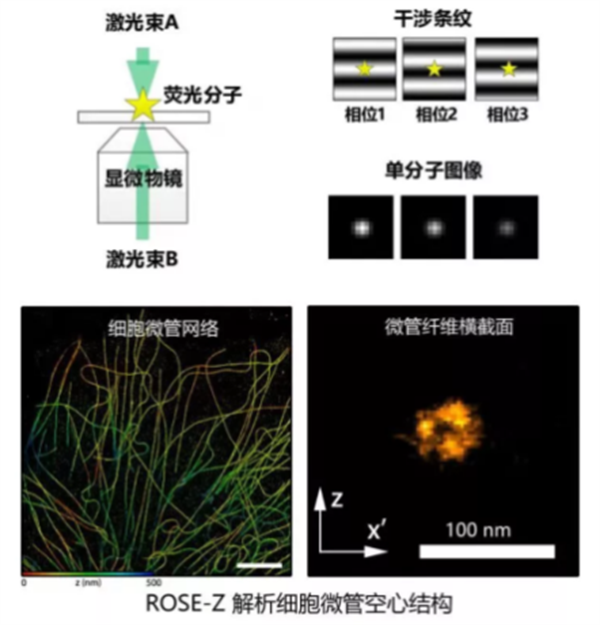Home> News
BSC projects among China’s top 10 advances in life sciences in 2021
Updated: 2022-01-20
The China Union of Life Science Societies (CULSS) at the China Association for Science and Technology announced the country’s top 10 most significant advances in life sciences in 2021 on Jan 10. Three projects recommended by the Biophysical Society of China (BSC) are included in the list.
SARS-CoV-2’s mechanisms for evading host innate immune responses and antiviral drugs

The diagram shows the capping and proofreading of SARS-CoV-2 RTC. [Photo/Cell]
Rao Zihe and Lou Zhiyong’s research team from Tsinghua University presented a structural snapshot of SARS-CoV-2 replication and transcription complex (RTC) and found the enzyme molecular that leads to the capping of SARS-CoV-2 mRNA, providing a target for antiviral development.
They also found that the virus eliminated mismatched bases and antiviral drugs through an in trans backtracking proofreading system, shedding light on the molecular mechanism of Remdesivir and other drugs’ poor effects and providing key scientific references for optimizing antiviral drugs against polymerase.
Assembly mechanism of Mediator-bound PIC

The photo shows a schematic model of PIC assembly. [Photo/Science]
Xu Yanhui’s research team from Fudan University parsed structures of preinitiation complex (PIC) and Mediator-bound preinitiation complex, presented transcription machine recognition of different promoters and the assembly process, and gave insight into Mediator’s promotion of PIC assembly and the mechanism of transcriptional activation.
Interferometric single-molecule localization microscopy

The picture shows interferometric single-molecule localization microscopy’s parse of microtubules’ hollow tubes. [Photo/culss.org.cn]
Xu Tao and Ji Wei’s research team from the Institute of Biophysics at the Chinese Academy of Sciences developed a ROSE-Z microscope based on interferometric localization and further enhanced the axial resolution for parsing subcellular nanoscale structure, facilitating studies in the field of life sciences.
CULSS has compiled this list annually since 2015 to boost scientific research and technological innovation and commend China's achievements in the field of life sciences.
